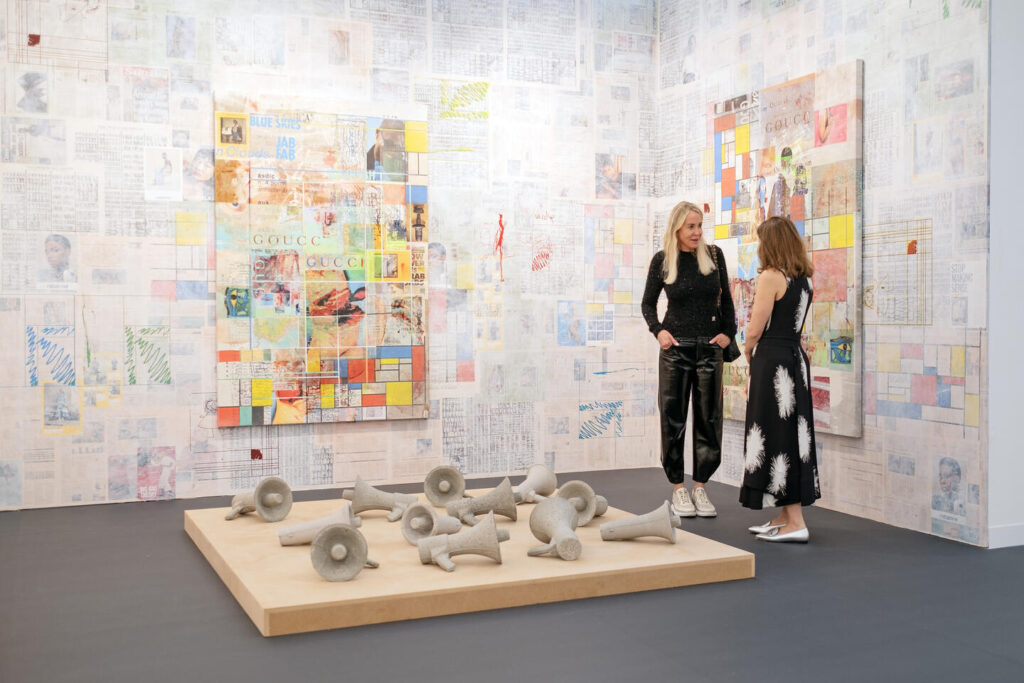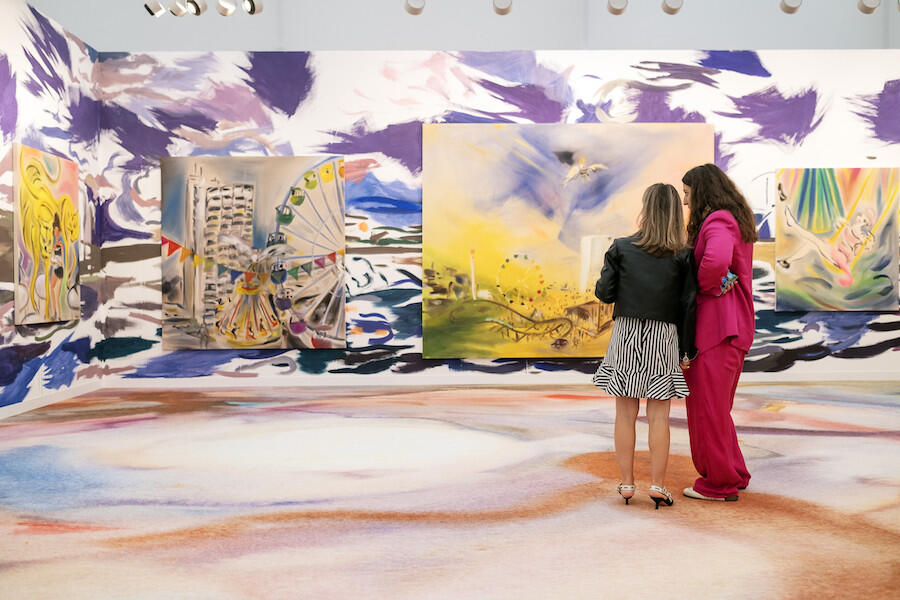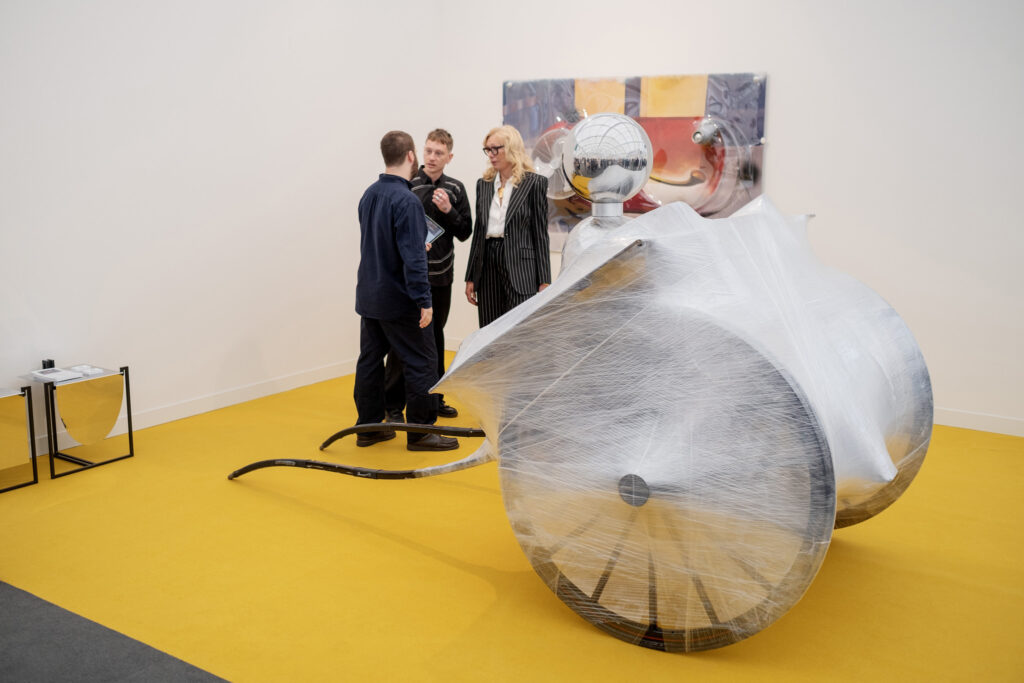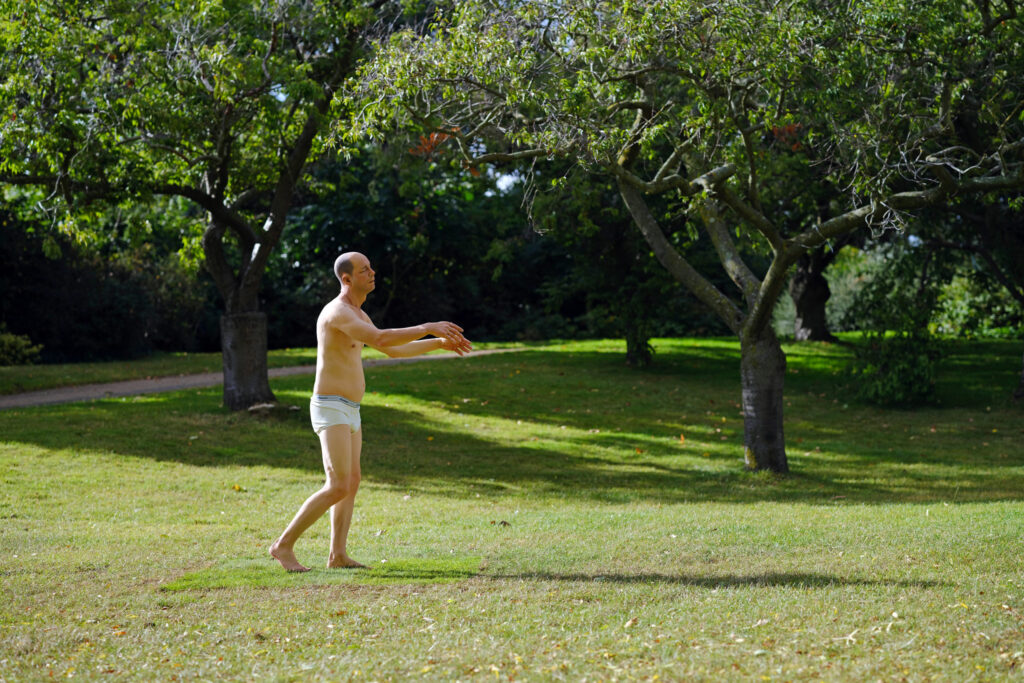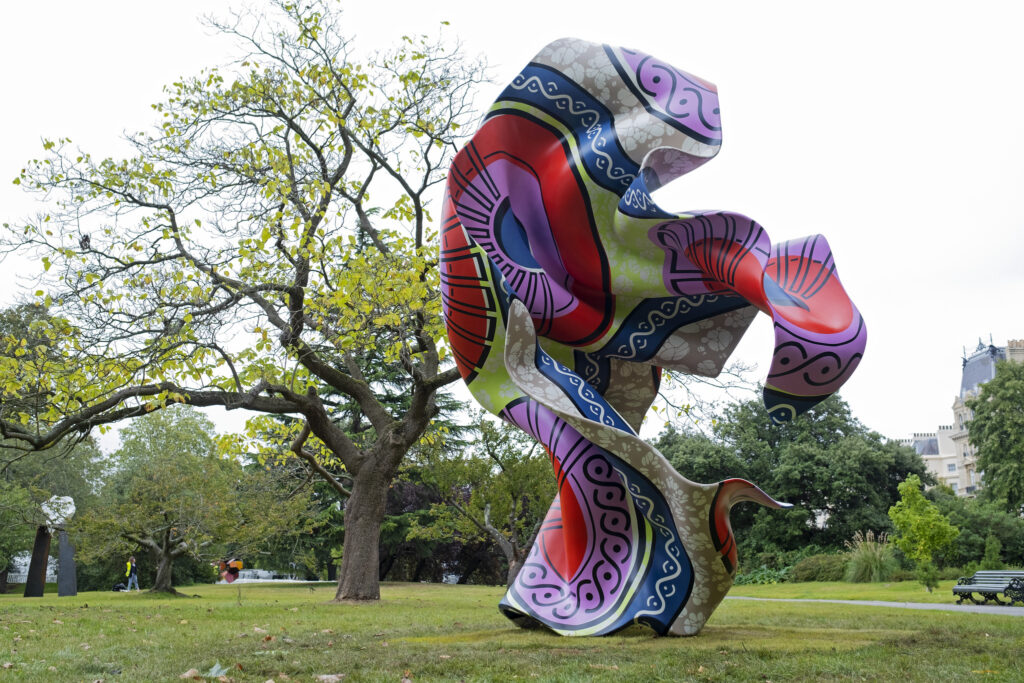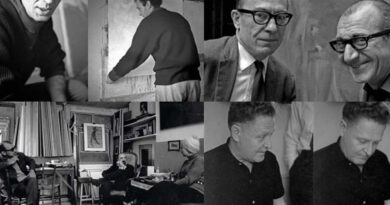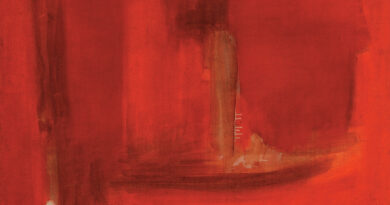frieze london: a contemporary art ritual
BY GÜLAY YAŞAYANLAR & MÜMTAZ SAĞLAM
Frieze London, it is possible to sense the priority of women artists of African and Far Eastern origin and black artists at every stage. In confirmation of this observation, there are many works that exemplify discussions of ethnic identity and origin, shaped by different material preferences. Clearly linked to discussions of psychogeography and biopolitics, these works are clustered under distinct concepts or headings such as gender, women, the body, migration and nature, and there is also an experimental and fantastical structuring reinforced by historical and political references.
3– Sophie von Hellerman, (Pilar Corrias A23) 4– Jack O’Brien, (Ginny on Frederick, Focus, H11)
(Photos by Linda Nylind. Courtesy Linda Nylind /Frieze) [https://www.flickr.com/photos/friezepress/albums]
Frieze London, celebrating its 20th anniversary, took place at The Regent’s Park from October 11 to 15, 2023, serving as a significant cultural event. Attracting 160 galleries from 40 countries and drawing an audience of 85,000 attendees, the fair transcended mere commercial interests. It provided a unique platform for art enthusiasts to closely engage with the innovative solutions crafted by artists.
In recent years, Frieze has extended its global influence to New York, Los Angeles, and Seoul, thereby becoming a dominant player in the international art landscape. Complemented by affiliated events like Frieze Masters and Frieze Sculpture, Frieze London has not only stirred excitement within the city but also reshaped the art ecosystem through collaborations with museums, galleries, and cultural centres.
Upon closer examination of the fair, the selection of artists and exhibited works reveals a deliberate emphasis on established visual language techniques and richly diverse and thought-provoking connections. The notable representation of women and Black artists, along with narratives associated with Asia and Africa, suggests a conscious content-driven curatorial preference.
the weight and privilege of well-known artists
This year, Frieze London introduced a distinctive project named Artist-to-Artist, designed to offer visibility to emerging artists through the endorsement of renowned figures, including Alvaro Barrington, Olafur Eliasson, Tracey Emin, Anthea Hamilton, Simone Leigh, Wolfgang Tillmans, Rirkrit Tiravanija, and Haegue Yang. This initiative offered a thought-provoking exploration of innovative narratives, as exemplified by Fabian Knecht’s selection by Olafur Eliasson, fostering an experimental attitude and a predilection for alternative materials.
Notably, the Gagosian Gallery, prominently positioned at the entrance, unveiled Damien Hirst’s exclusive series, The Secret Garden Paintings. Presented as a tribute to Frieze’s 20th anniversary, this exhibition resembled a solo show, showcasing the latest phase of Hirst’s artistic evolution. His emotional depictions harmoniously blend intricate floral imagery with design order, showcasing a highly personalised artistic journey.
Similarly, Hauser & Wirth featured a solo exhibition of Barbara Chase-Riboud’s work, highlighting her iconic bronze sculptures from The Standing Black Woman of Venice series, alongside six new works on paper incorporating silk threads and the automatic writing technique. These sculptures monumentalize figures emblematic of Africa’s cultural heritage, evoking a sense of historical memory.
The roster of artists also included prominent names such as Gilbert & George, Robert Rauschenberg, Anish Kapoor, Georg Baselitz, Andy Warhol, Gerhard Richter, Anselm Kiefer, Antony Gormley, Tony Cragg, Alex Katz, Erwin Wurm, Robert Longo, Robert Mapplethorpe, Mona Hatoum, Marina Abramovic, William Kentridge, Ai Weiwei, Imy Knobel, Do Ho Suh, Kader Attia, and Rinus Van de Velde, contributing to the overall artistic tapestry of the event.
In a different venue, Frieze Masters, under the directorship of Nathan Clements-Gillespie, maintained its reputation for a rigorous and alternative approach. This year’s edition included distinct sections like ‘Modern Women,’ ‘Focus,’ ‘Studio,’ ‘Spotlight,’ and ‘Stand Out.’ ‘Modern Women,’ curated by Camille Morineau, delved into works from the last century that resonate with the themes of women’s rights and feminism, showcasing women artists addressing gender issues. In the same space, ‘Studio,’ curated by Sheena Wagstaff, featured five significant women artists, drawing attention to the creative process in the artists’ studios as both workspaces and living environments.
the opposition between the monumental and the ephemeral
Frieze Sculpture, featuring outdoor installations and open-space projects, united the works of twenty artists in public spaces. Curated by Fatoş Üstek, this exhibition emphasized the juxtaposition between the monumental and the ephemeral, seamlessly integrating with diverse forms of artistic production.
Noteworthy among the featured artists were Ayşe Erkmen and Gülsün Karamustafa, two Turkish women artists. Erkmen’s Moss Column, a five-meter moss-covered stone column, uniquely engaged with its physical environment, offers a novel approach that conceptualizes a self-replicating natural state. Karamustafa’s Monument for 21st Century, presented with a screen image accessible through a QR code on a red pedestal, carried profound symbolic connotations, delving into the realm of abused freedoms.
Yinka Shonibare’s vibrant decorative sculpture, characterized by graceful curves, and Tony Matelli’s nude male sculpture, which embodies banal aesthetics, captured significant attention in the extensive Frieze Sculpture exhibition. Shonibare’s Material (SG) IV, a defining work of Frieze London 2023, vividly conveyed his exploration of ethnic connections and hybrid cultural identities, creating an impressive metaphor for multicultural identities.
frieze london: a contemporary art ritual that drifts beyond the fair
In the general outlook of Frieze London 2023, it is possible to sense the priority of women artists of African and Far Eastern origin and black artists at every stage. In confirmation of this observation, there are many works that exemplify discussions of ethnic identity and origin, shaped by different material preferences. Clearly linked to discussions of psychogeography and biopolitics, these works are clustered under distinct concepts or headings such as gender, women, the body, migration and nature, and there is also an experimental and fantastical structuring reinforced by historical and political references.
In summary, Frieze London 2023, across its various segments, effectively created a multinational and multicultural representational space. The emphasis on the diverse expressive methods employed by contemporary artists, as well as their innovative approaches, facilitated profound reflections on the transformative dynamics of art, its creative quality, and its intricate connections with contemporary, cultural, and political realms through a diverse range of artworks.
Gülay Yaşayanlar & Mümtaz Sağlam, Copyright © 2023 / All Rights Reserved.
[1] Developed by the founders of Frieze magazine, which began publishing in 1991, Frieze London is a contemporary art fair first organized in 2003 at The Regent’s Park in London. In 2012, the organization was strengthened with a separate concurrent event called Frieze Masters, and has since expanded to Frieze New York, Frieze Los Angeles and Frieze Seoul. It is also known to have acquired Frieze The Armory Show and EXPO Chicago. Frieze can be considered the first art fair to implement similar cultural programs and practices such as exhibitions that create space for curators, artist, curator, writer and collector talks during the fair. Frieze London makes a major contribution to London’s art scene by collaborating with major art institutions and planning a major movement across the city. For more information see: Frieze Week, 11-15 October 2023, London. [ www.frieze.com]
[2] There are a number of high quality events taking place in museums, galleries and cultural centers in London that coincide with Frieze London: Tate Britain / Sarah Lucas Happy Gas, Tate Modern / Philip Guston, Tate Modern Turbine Hall / Hyundai Commission / El Anatsui: Behind on the Moon, The Royal Academy of Arts / Marina Abramovic, Whitechapel Gallery / Nicole Eisenman: What Happened, White Cube / Julie Mehretu, Almine Rech / Celebrating Picasso Today: Infinite Modernism, Gagosian / Richard Prince: The Entertainers, Gagosian Open (4 Princelet Street) / Christo: Early Works, David Zwirner / Liu Ye: Naive and Sentimental Painting, Thadeus Ropac Gallery / Daniel Richter: Stupor, Hauser & Wirth / Avery Singer: Free Fall, Victoria Miro / Paula Rego: Letting Loose, Lehmann Maupin / Kader Attia-Mandy El-Sayegh: Disfigurations / October Gallery / El Anatsui: Time Space, Pace / Robert Irwin+Mary Corse: Parallax, Mazzoleni / The Paradox of Proximity, Goodman Gallery / Shirin Neshat: The Fury ve Haywad Gallery / Hiroshi Sugimoto: The Machine
[3] In the Artist-to-Artist exhibition, Deborah Anzinger was proposed by Simone Leigh; Mark Barker by Wolfgang Tillmans; Ayoung Kim by Haegue Yang; Fabian Knecht by Olafur Eliasson; Simonette Quamina by Alvaro Barrington; Vanessa Raw by Tracey Emin; Wantanee Siripattananuntakul by Rirkrit Tiravanija and Carlos Villa by Anthea Hamilton.
[4] Frieze Masters, which had its first edition in 2012, is the most important side event complementing the fair. Led by Nathan Clements-Gillespie, Frieze Masters aims to create an environment/option for visitors to rediscover art history by bringing together rare antiquities, masterpieces by old masters and highly representative works from the 20th century. For more information please see: Frieze Masters, Editor: Nathan Clements- Gillespie, 11-15 October 2023, London.
[5] The artists in the Frieze Sculpture selection are: Ghada Amer, Leilah Babirye, Sanford Biggers, Jyll Bradley, Catharine Czudej, Ayşe Erkmen, Yuichi Hirako, Gülsün Karamustafa, Suhasini Kejriwal, Tony Matelli, Louise Nevelson, Temitayo Ogunbiyi, Zak Ové, Li Li Ren, Hans Rosenström, Tomas Saraceno, Yinka Shonibare, Josh Smith, Amy Stephens, Holly Stevenson and Hank Willis Thomas.

